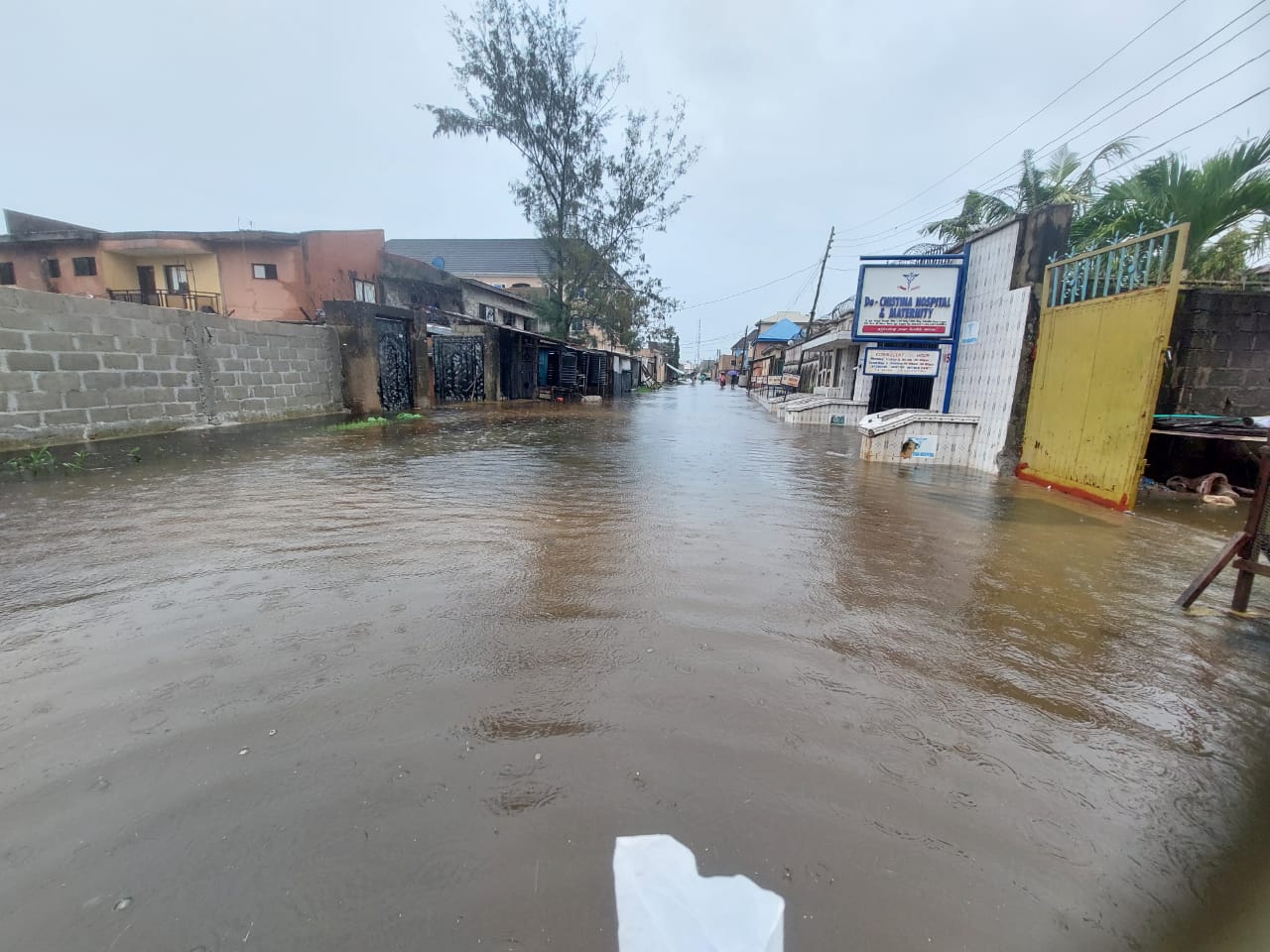Flooding in Nigeria: A case of climate change or governmental failure?
Flooding in Nigeria has become an annual catastrophe that wreaks havoc across the nation, displacing thousands, destroying properties and causing untold suffering. Each rainy season, the nation braces for the inevitable: swollen rivers, submerged homes and communities stranded by rising waters. But as we witness these disasters unfold year after year, we must confront a […]

Flooded Lagos
Flooding in Nigeria has become an annual catastrophe that wreaks havoc across the nation, displacing thousands, destroying properties and causing untold suffering. Each rainy season, the nation braces for the inevitable: swollen rivers, submerged homes and communities stranded by rising waters. But as we witness these disasters unfold year after year, we must confront a pressing question: Are these floods simply a manifestation of climate change, or are they the result of government failure to develop adequate infrastructure to manage water flow?
There is no denying that climate change plays a significant role in the increased frequency and severity of floods in Nigeria. Changes in global weather patterns have led to more intense and unpredictable rainfall, which contributes to flooding.
The Intergovernmental Panel on Climate Change (IPCC) has reported that climate change exacerbates extreme weather events, including heavy rainfall, which Nigeria has experienced in recent years.
Nigeria’s geographical location also makes it particularly vulnerable to climate change. The country is situated in a region where the climate is already volatile, with the northern part of the country facing desertification and the southern part dealing with excessive rainfall and flooding. This dual challenge is a clear indication that Nigeria is on the front lines of the climate crisis.
- Stop patronising Pastor Fufeyin’s ‘miracle’ water, soap, NAFDAC warns
- 48 people, 50 cows killed in Niger road accident
While climate change is a contributing factor, it cannot be the sole scapegoat for Nigeria’s flooding woes. A significant part of the problem lies in the government’s consistent failure to develop and maintain adequate infrastructure that can handle heavy rainfall and manage water flow. The lack of proper urban planning, inadequate drainage systems, and insufficient investment in flood control measures have left many communities vulnerable to flooding.
Nigeria’s major cities, such as Lagos, Port Harcourt, and Abuja, are plagued by poor drainage systems that quickly become overwhelmed during heavy rains. The government’s failure to enforce building regulations has also led to the construction of structures on floodplains and other vulnerable areas, exacerbating the impact of floods.
Furthermore, the absence of effective waste management systems means that drains are often clogged with debris, reducing their capacity to channel water away from populated areas.
The paradox in Nigeria’s flood crisis lies in the coexistence of both climate change and governmental failure as primary causes. It is a complex interplay where one issue exacerbates the other. Climate change-induced heavy rains would not cause as much devastation if there were proper infrastructure in place to manage water flow. Conversely, the impact of inadequate infrastructure is magnified by the increasing intensity of rainfall due to climate change.
Nigeria’s government must recognize that while they cannot control the climate, they have the power and responsibility to build resilient systems that can mitigate the effects of climate change. This involves investing in modern drainage systems, enforcing strict building codes, ensuring proper waste management, and engaging in comprehensive urban planning that considers the changing climate.
Addressing Nigeria’s flood problem requires a multi-faceted approach. First and foremost, the government must acknowledge its role in the crisis and take immediate steps to improve infrastructure. This includes repairing and upgrading existing drainage systems, constructing new ones where needed, and developing sustainable urban planning policies that prevent construction in flood-prone areas.
In addition, there must be a greater emphasis on climate change adaptation strategies. This involves creating early warning systems for floods, educating communities about the risks and responses to flooding, and investing in research to better understand the impacts of climate change on Nigeria’s hydrology.
International cooperation is also crucial. Nigeria should seek technical and financial support from international bodies to help build its resilience against climate-induced disasters. Moreover, there needs to be a national policy framework that integrates climate adaptation with disaster risk management.
Nigeria’s flood crisis is not solely a result of climate change or governmental failure, but rather a combination of both. The government must rise to the challenge by investing in the necessary infrastructure and implementing effective policies that address both immediate needs and long-term resilience. Only then can Nigeria hope to mitigate the devastating impacts of floods and protect its citizens from future disasters.
Murkthar Suleiman resides in Abuja and can be reached via [email protected]
